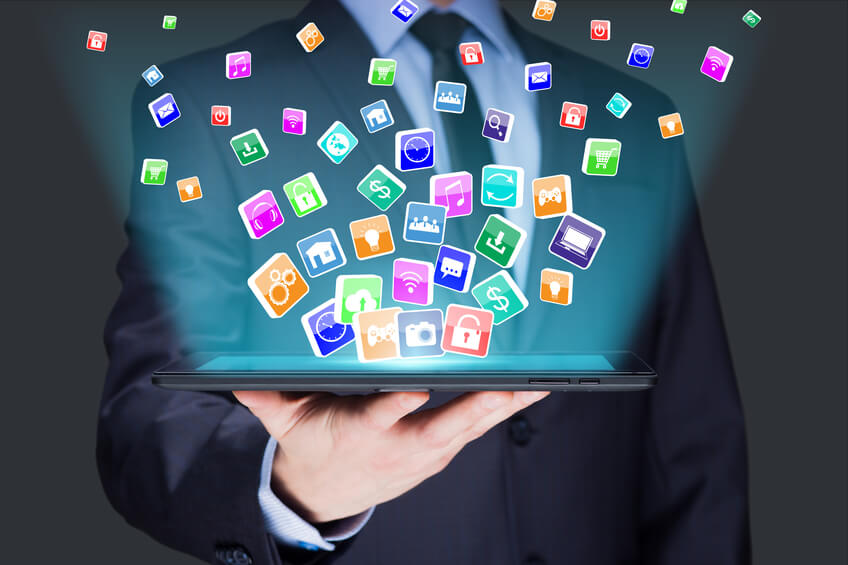Now that 2016 has come and gone it’s time to look ahead and see what opportunities 2017 has awaiting us. Savvy marketers (present company included) are starting to think about what’s new and exciting on the digital marketing horizon for 2017. As we plan our 2017 digital marketing strategy and budget, we study the technologies that are emerging. We check out what the big brands are doing and most importantly, figure out what resonates with our audience.
While no one has a crystal ball, it’s the brands that are best able to identify and plan for the growing trends that will shape the 2017 digital marketing landscape who will be most successful in the coming year.
Here are our top five predicted trends that should shape your 2017 digital marketing strategy and budget:
1. Content Marketing.
It’s not exactly newsy that content marketing can, will and should dominate your brand’s digital marketing strategy for next year—the process of following a well-executed plan to deliver useful, relevant and engaging information that your audience considers beneficial has hopefully been informing your marketing decisions already.
But with so many marketers already taking a ride on the content marketing express–the Content Marketing Institute says that 88% of B2B marketers in North America currently rely on some form of content marketing—it will become increasingly difficult for brands to break through the digital noise to differentiate their content, and themselves. Look for a focus on quality over quantity. Marketers will get away from churning out a seemingly endless stream of fluffy stuff in the hopes of keeping their name in the game. Instead, they will focus in 2017 on producing substantial, quality content that will resonate with their target audience—and with search engines. Consumers are getting more savvy—and therefore more demanding—by the day, and the content that we are feeding them needs to keep up or get lost in the sauce.
2. Video Marketing.
If content was king in 2016, it may have to abdicate the throne in 2017 to video. Plain and simple, consumers like to watch videos, whether for entertainment or informational purposes, and where the consumers go, brands are sure to follow. Both Facebook and Twitter, as well as relative newbie Snapchat have invested heavily in the video marketing industry lately, making the social media platforms the best place for brands to share engaging video content to gain exposure and convert customers.
Look for live streaming video to go from being more of a novelty in 2016 to the marketing mainstream in the new year. Advances in technology will allow the ‘consumer as voyeur’ model to grow in 2017—it will become increasingly easy to provide users with the unfiltered, unedited look behind the curtain that they respond so well to. Couple that with the fleeting nature of spontaneous live video—better watch now or you’ll miss the opportunity completely—and consumers are hooked.
3. Focus on the Mobile Experience.
We are officially spending more time on mobile devices than we do on our TVs or laptops, and we can thank the aforementioned video consumption for much of it. A recent survey revealed that of the 82% of Twitter users who say they watch videos on a regular basis, a staggering 90% of them do so on their mobile devices!
So, in keeping with the theme that smart marketers will go where their audience lives, expect to see even more marketing focus shift toward reaching the consumer on-the-go in 2017. Spurred by Google’s mobile-friendly shift in 2015, brands desperate to hang onto their search engine rankings have been optimizing their websites for mobile devices. Google reveals that currently, more than half of their searches are initiated on mobile, and we expect that percentage to climb as users spend more and more time attached to and absorbed by their smartphones.
4. Influencer Marketing.
As noise in the digital landscape gets louder, and consumers are confronted with a literally endless stream of information, they look for somewhere to turn to make sense of it all. And they are turning to the seemingly unbiased professional with knowledge to share—the influencer. Today’s consumer is more likely to trust an influencer than brand messaging–92% of consumers cop to valuing an endorsement from a complete stranger over any form of branded content they are served up.
Increasingly, the influencer does have skin in the game. 2016 saw brands’ realization that the fastest route to their audiences’ hearts was the trusted thought leader—and that it was time to include a line item in the marketing budget for influencer marketing. Look for more brands in 2017 who are willing to invest time and resources to identify and align with the right influencer who not only believes in their brand but can communicate their message to the right following.
5. Wearable Technology and the Internet of Things.
As wearables become more mainstream—research estimates a user adoption rate of about 28% at this point—and the Internet of Things becomes a reality, experts envision a giant network of connected ‘things’ in the not so distant future. Anything that can be connected will be connected, to the point that by next year, it is expected that the typical household will have at least five Internet-connected devices.
What does this mean for marketers? The Internet of Things represents a whole new world of virtually endless opportunities to connect with consumers. We expect that in 2017, the uber-network will provide marketers with more marketing data than they know what to do with. This access to unprecedented levels of specific insight into consumer habits and preferences will enable marketers to target their audience more accurately than ever before.
